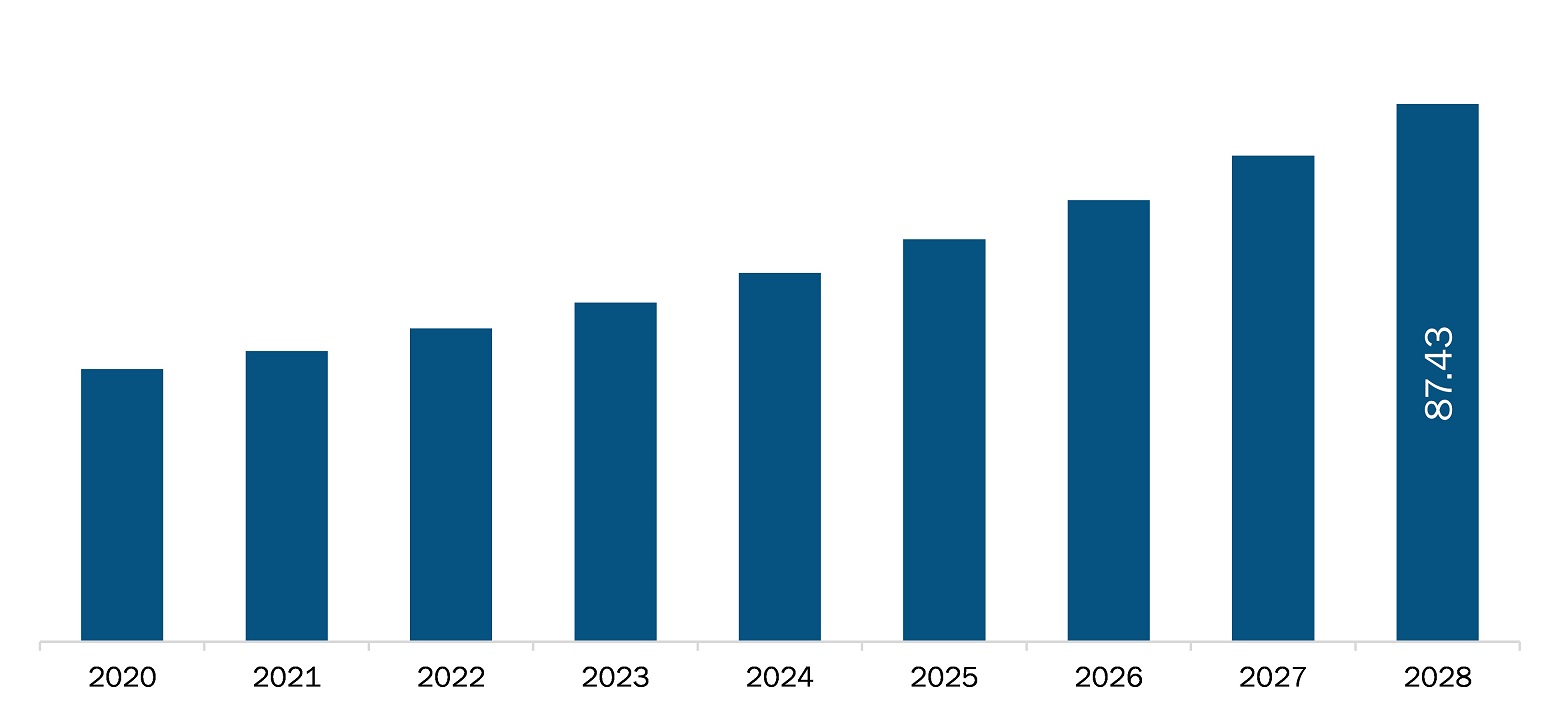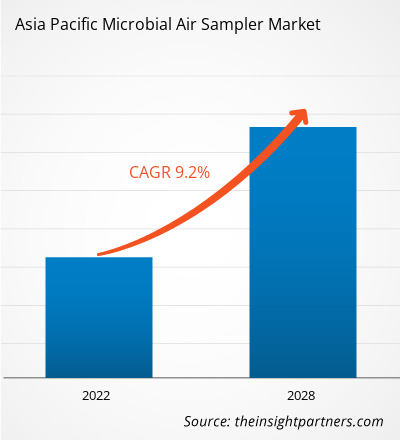The Asia Pacific microbial air sampler market is expected to reach US$ 87.43 million by 2028 from US$ 47.27 million in 2021; it is estimated to register a CAGR of 9.2% from 2021 to 2028.
The growth of the market is attributed to key driving factors such as growing usage of microbial air samplers in combating the COVID-19 situation and increasing cases of food contamination by microbes. However, the high capital investment for setting up an advanced lab is restraining the market growth.
Industrialization has resulted in environmental damage. Economic activities have the potential to improve or degrade environmental quality, which can help or hinder economic operations. Ambient air pollution accounts for an estimated 4.2 million deaths per year due to stroke, heart disease, lung cancer, and acute and chronic respiratory disease. Approximately 91% of the world's population lives in areas where air quality is below the acceptable standards set by the World Health Organization (WHO). As a result, numerous environmental protection acts have been enacted, providing a significant opportunity for the environmental testing market. In the next five years, various changes and new environmental safety standards are projected to be implemented, mostly in developing economies owing to increased pollution and environmental contamination. The constant development of innovative testing methods for contaminant samples such as pesticide residues, heavy metals, and organic compounds is likely to contribute significantly to the market's growth.
Countries in Asia Pacific are facing challenges due to increasing incidences of COVID-19 in the second wave of the pandemic. The COVID-19 pandemic is projected to generate highly lucrative opportunities for microbial air sampler in the region, as the novel COVID-19 virus is found to be air borne. The pandemic provides impetus to the market growth, with clinics, hospitals, and CROs pushing for greater adoption. The current outbreak is likely to result in several permanent changes in how the healthcare sector is organized. Moreover, market players are now investing their efforts in offering better service, particularly in the detection of virus. For instance, in April 2020, the Bertin Technologies developed the air sampler Coriolis µ (Micro) to collect Coronavirus (SARS-CoV-2) and help combat its spread in Asia and Europe. The Bertin Technologies Coriolis air samplers have been extensively used by the Shenzhen and Guangzhou Centers for Disease Control and Prevention (CDC) as well as the South China Institute of Environmental Sciences to collect coronavirus SARS-CoV-2 responsible for COVID-19 infections and clearly evaluate the risk of aerosol contamination in critical areas. Thus, owing to the above-mentioned factors, the spread of COVID-19 has had a positive impact on the Asia Pacific microbial air sampler market.

- This FREE sample will include data analysis, ranging from market trends to estimates and forecasts.
ASIA PACIFIC MICROBIAL AIR SAMPLER MARKET SEGMENTATION
By Product Type
- Portable Microbial Air Sampler
- Desktop Microbial Air Sampler
- Accessories
By Collection Technique
- Impact Air Sampler
- Impinge Air Sampler
- Surface Air Sampler
- Compressed Air Sampler
- Real-Time Samplers
- Others
By Distribution Type
- Direct Tender
- Retail Sales
- Third-Party Distributor
- Others
By End User
- Research and Academic Institutes
- Hospitals and Clinics
- Pharmaceutical and Biotechnology Companies
- Food and Beverage
- Personal Care Industries
- Others
By Country
- China
- Japan
- India
- Australia
- South Korea
- Rest of Asia Pacific
Company Profiles
- Cherwell Laboratories
- Multitech Enviro Analytical LLP
- Munro Instruments Limited
- MERCK KGaA
- bioMerieux SA
Asia Pacific Microbial Air Sampler Report Scope
| Report Attribute | Details |
|---|---|
| Market size in 2021 | US$ 47.27 Million |
| Market Size by 2028 | US$ 87.43 Million |
| Global CAGR (2021 - 2028) | 9.2% |
| Historical Data | 2019-2020 |
| Forecast period | 2022-2028 |
| Segments Covered |
By Product
|
| Regions and Countries Covered | Asia-Pacific
|
| Market leaders and key company profiles |
- Historical Analysis (2 Years), Base Year, Forecast (7 Years) with CAGR
- PEST and SWOT Analysis
- Market Size Value / Volume - Global, Regional, Country
- Industry and Competitive Landscape
- Excel Dataset



Report Coverage
Revenue forecast, Company Analysis, Industry landscape, Growth factors, and Trends

Segment Covered
This text is related
to segments covered.

Regional Scope
North America, Europe, Asia Pacific, Middle East & Africa, South & Central America

Country Scope
This text is related
to country scope.
Trends and growth analysis reports related to Life Sciences : READ MORE..
- Cherwell Laboratories
- Multitech Enviro Analytical LLP
- Munro Instruments Limited
- MERCK KGaA
- bioMerieux SA

 Get Free Sample For
Get Free Sample For